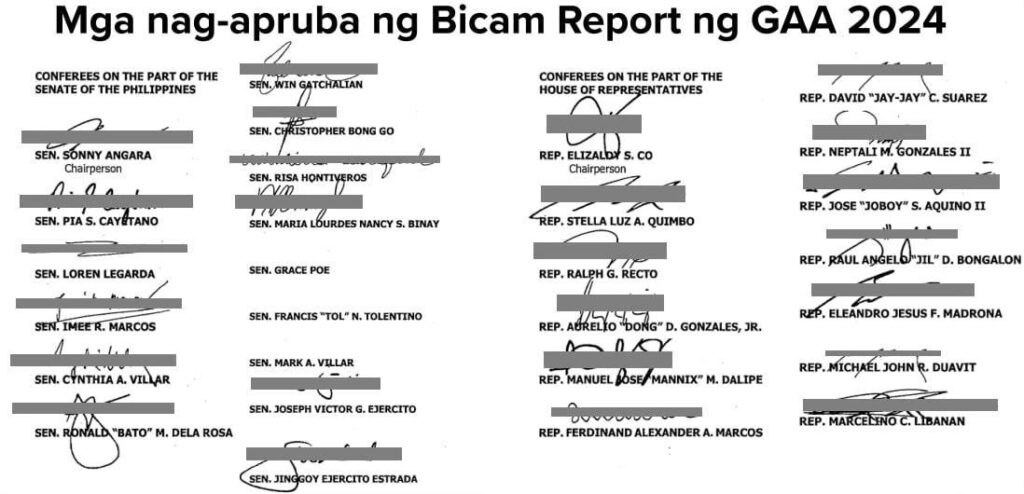The call for accountability in the wake of flood-control failures and the lingering questions about ghost projects in the Department of Public Works and Highways (DPWH) is not a partisan indulgence. It is a basic test of whether political power can be wielded for real reform or just merely to placate a frustrated public with glossy promises. President Ferdinand “Bongbong” Marcos Jr. has publicly embraced a rhetoric of transparency and accountability. That is laudable. It is also wildly insufficient if it stops there. The public deserves more than a creed; it deserves concrete, systemic changes that make it nearly impossible for public resources to be siphoned off by whatever names or parties occupy the corridors of power. If this presidency fails to translate rhetoric into reform, it risks a legacy that is hollow and, ultimately, a political dead end for Marcos himself. What the disasters have laid bare is this: flood-control infrastructure in the Philippines is not merely a technical problem to be tinkered with during the dry season. It is a governance problem.
When a flood-control project collapses or when a ghost project is floating in the budgets and plans, it signals a deeper rot—one that thrives in opaque processes, ambiguous accountabilities, and the absence of real consequences for mismanagement or malfeasance. The public’s tolerance for excuses—budget overruns, shifting goals, or “unforeseen” delays—has a finite limit. The moment the people sense that a project’s failure intersects with the personal or political interests of those in power, faith in government erodes swiftly. Formulating a robust response requires moving beyond rhetoric about transparency to instituting a culture of accountability that changes incentives at every layer of decision-making. The public needs real solutions, not political drama series. The framework should begin with three interlocking pillars: prosecutorial clarity, comprehensive reform of infrastructure project governance, and a redefined allocation of power and discretion that minimizes opportunities for corruption while preserving necessary expertise and accountability. Prosecute, not merely investigate, those implicated in failed projects and ghost initiatives.
The call for prosecution is not a cudgel for political vendetta; it is a signal that public resources are sacred and that misusing them—whether through negligence, incompetence, or outright corruption—has consequences that extend beyond a single term of office. Prosecutorial action should be guided by clear thresholds: misappropriation of funds, falsification of project claims, deliberate misrepresentation of project status to the public, or gross governance negligence that directly leads to catastrophic outcomes. The objective is not the destruction of reputations but the restoration of public trust. If officials are confident that there will be accountability for wrongdoings, they will think twice before gaming the system. But accountability cannot stop at the prosecutorial stage. It must be embedded in the very processes by which infrastructure projects are planned, funded, and executed.
The idea that a single official or a handful of insiders can greenlight a multi-billion peso project—or pull the plug on it—too easily invites corruption risk. A safer architecture would be one in which approvals require cross-branch consensus, robust scrutiny from independent technical bodies, and explicit performance criteria tied to deliverables and timelines. This does not mean eliminating expertise; it means binding that expertise to transparent, externally verifiable checks. It also means ensuring that project disbursement is matched with real, measurable progress, not with political milestones or seasonal optimism. If the goal is to remake risk into a high-cost, low-reward activity for corruption, then the system must be calibrated so that the return to those who game it is minimal and the consequences for those who fail the public trust are real and swift. Risk can be elevated by transparent, public-facing dashboards that track every step of a project—from feasibility studies, environmental impact assessments, and procurement to construction progress and post-implementation reviews.
The campaign for accountability should speak in tangible terms: a timeline for reform, a transparent process for appointing independent project inspectors, and a commitment to publish and publicize the outcomes of every major flood-control project. It should invite civil society, the private sector, and local governments into the governance loop, not as passive observers but as active partners with real oversight responsibilities. An inclusive approach that invites diverse voices—and, crucially, protects dissenters—will strengthen legitimacy and widen the base of support for reform. In the end, the question is whether President Marcos’s tenure will be defined by a credible reform of infrastructure governance or by a persistent pattern of hope-based promises that fail to translate into durable results. The degree to which accountability is institutionalized will determine the trajectory of this term and, perhaps, the country’s political landscape for years to come. A renewed emphasis on prosecutorial action where warranted, a comprehensive overhaul of how infrastructure projects are planned and executed, and a constraint on discretionary power to prevent the kinds of misallocations that fuel corruption are not radical ideas; they are the minimum expectations of a citizenry that has endured floods, mismanaged funds, and the erosion of public trust for far too long.
If the Marcos administration can translate its rhetoric into these reforms, it might still craft a legacy that transcends political rivalries and party lines. Such a legacy would be more than a footnote in the annals of governance; it would be a blueprint for a more resilient and trusted state. It would answer the urgent demand from communities that live with the daily reality of floods and the slow drip of inefficiency that follows many a failed project. It would insist, in no uncertain terms, that corruption is a high-risk, low-reward activity and that the public’s hard-earned money will be used for the people’s protection, not private enrichment. But the clock is ticking, and the country cannot wait for a perfect formula to emerge from the fog of politics. The path forward requires courage, a willingness to take unpopular but necessary steps, and a principled refusal to accept half-measures as a substitute for real reform. The public deserves to see, in plain terms, how every peso is accounted for and how every project is judged by its outcomes, not by its promises. If President Marcos can rise to that challenge, the nation may finally turn a corner on one of its oldest and most damaging legacies: the unproductive tension between grand plans and the messy realities of implementation. If, however, this term ends without meaningful change—if the flood-control failures repeat, if ghost projects reappear as ghost budgets, and if the machinery of accountability remains only a rhetorical flourish—then the verdict will be painful and clear: the end of an era in which the Marcos name is synonymous with reformable potential rather than the hard-won hard truths of governance. In that case, the national political future could very well pivot away from Marcos entirely, not out of vengeance but out of a public clear-eyed about what it cost to delay reform. The country would move on, as nations must, toward leaders and governments that prove, through demonstrable outcomes, that systems built for accountability endure beyond the tenure of any single individual.
The task, then, is simple in principle and arduous in practice: translate transparency into action, convert accountability from a slogan into a system, and ensure that power—especially in the realm of infrastructure—carries with it the obligation to serve the people rather than to preserve the interests of the few. This is the essence of responsible governance in a democracy—where the people’s safety, welfare, and trust are the anchors of every decision. If President Marcos uses the remainder of his term to institutionalize reforms that make corruption costly and competence essential, he could leave a legacy that outlasts the political turbulence of any one era. If he fails, the chapter will close not with a flourish of triumph but with a sober acknowledgment: that a national project of resilience, once promised, was never delivered because the architecture of accountability was never built. The outcome will be determined not by rhetoric, but by the daily, unglamorous work of reform—of prosecuting wrongdoing where it is found, of overhauling processes to remove discretion that invites abuse, of building infrastructure governance that is open, auditable, and resilient.




